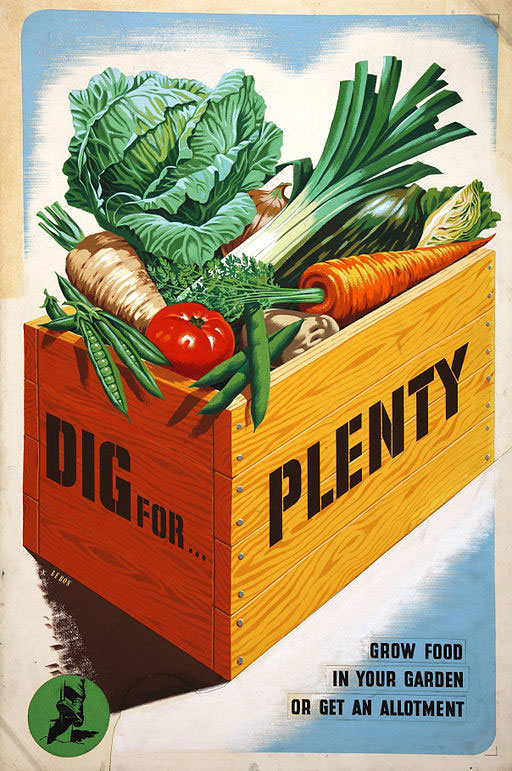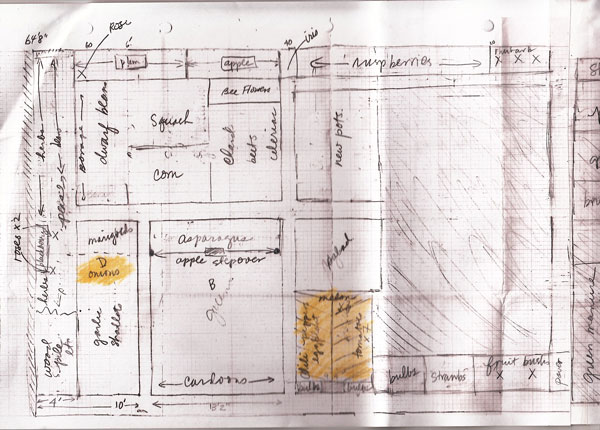Information isn’t like apples and oranges, or even vegetables, but after my first year gardening on an allotment I realised how much information management I used to grow a simple salad.

Dig for plenty, by Le Bon (catalogue reference INF 3/98)
Those uniform bags of leaves sitting in the supermarket cooler had me lulled into a false sense of the ease and simplicity of the mechanics of planning, growing, protecting, distributing and finally storing the crop until it was time to eat.
If you haven’t gardened on an allotment before, it’s a community spirit geared towards the frugal application of resources, sharing and recycling, to create an abundance of crops. We’re seeing this attitude in the management of information as well – less is more, collaboration is necessary. When I started writing this blog post, I wanted to explain how an allotment is like a community cloud – I could use my own garden, but I choose to share a place that I pay for and can walk away from – hopefully with plenty of delicious food! But the Cloud is hogging the show lately – information management is needed whether it’s a cloud or your own servers and infrastructure.
What I really enjoyed about the allotment was designing its structure. Every plot in the allotments has the same dimensions (30′ x 90′) but how each allotment holder decides to carve up the space for essentially the same crops was of course completely different. Some even had chickens! But structure didn’t stop there. I had to make sure there were poles sturdy enough to hold the melons, beans and other climbing plants; wires for trees, berries and tomatoes; paths to get around without stomping on the young plants and a system for rotating the different types of crops every four years.
Once the plan and layout are decided, the plants could start to be purchased, planted or grown from seed. I had to make sure each seed row kept its identity – the seed packet or stake showing when it had been planted and what it was. There were a few rows that lost this data and I really had no idea what they were! And this is an important time to protect the young plants from pests – putting up barriers, making it difficult to get to them.
When summer comes everything accelerates – it seems as if every plant starts becoming ripe at the same time, weeds choke the rows and paths and, ‘when exactly are those potatoes ready for digging up?’ Poring over books and websites trying to keep up with the changes, I realised I hadn’t really planned quite enough – it was one thing writing the date of planting on the stake in the row of corn and quite another to know exactly when the crop might be picked. And now, with winter upon us, it’s time to destroy all the annuals and their stalks, roots and the weeds in one great bonfire.
Now, after a year, I can see the cycle unfolding, the pattern emerging. You’ve got to keep on top of it or it can become overwhelming – planning the structures, planting what you want to eat (and not just courgettes that become marrows because you can’t eat them fast enough), labelling and keeping track of what’s what, knowing when things have to be removed, weeded and when to pull it all and store it in the shed or give to neighbours and friends. I’ll try new plants next year, rotate the crops – it’s not a static situation, but it’s worth the bother when you sit and think ‘Yow! That’s one hot chili pepper!’

I like the clear way the problems of vegetable growing were set out, it does take time and commitment, but then so does tracing your family tree, many weeds or blind alleys beset the grower, but perseverance wins in the end. Well done!
BONFIRE! Whatever happened to composting?